Ah, the joy of puppyhood! Those adorable, energetic little balls of fur that bring so much love and laughter into our lives. As pet parents, we want to ensure our furry companions not only stay happy and healthy but also entertained with the best toys. That’s why we’ve put together this guide to help you find the perfect safe puppy toys that will stand the test of time and provide endless fun for your little one. From interactive play to gentle snuggle companions, we’ve got you covered with tips and top picks to make your puppy’s playtime both safe and enjoyable.
Introducing Safe Puppy Toys: The Essential Guide for Pet Parents
When it comes to our furry little companions, ensuring their happiness and safety is paramount. One of the best ways to do this is by providing them with high-quality, safe puppy toys. These toys not only entertain and stimulate our playful pups but also help in their development. In this guide, we’ll delve into the importance of safe puppy toys and how to choose the perfect ones for your little buddy.
The Importance of Safe Materials
The first thing to consider when selecting a puppy toy is the material. Safe puppy toys are made from non-toxic, durable materials that can withstand rigorous play. Look for toys crafted from natural rubber, sturdy plastic, or eco-friendly fabrics. These materials are less likely to cause harm if they are chewed on or ingested by your puppy.
Durability and Sturdiness
Puppies are notorious for their teething phase and their tendency to chew on everything they can get their paws on. A safe puppy toy should be able to withstand the test of time and teeth. Opt for toys with reinforced stitching and solid construction. This will ensure that your pup can play without worrying about the toy breaking apart and causing a choking hazard.
Size and Shape Matters
The size and shape of a puppy toy are crucial factors to consider. Make sure the toy is appropriately sized for your puppy’s breed and size. A toy that is too small could be a choking hazard, while one that is too large might not be engaging enough. The shape should also be safe, with no sharp edges or removable parts that could pose a risk.
Interactive and Engaging Features
Interactive toys can be a game-changer for your puppy’s playtime. These toys often come with features like squeakers, lights, or textures that stimulate your pup’s senses and encourage play. Look for toys that can be filled with treats or puzzle elements to keep your puppy’s mind occupied and provide mental stimulation.
Ease of Cleaning
After a day of play, it’s important to keep your puppy’s toys clean. A safe puppy toy should be easy to wash and maintain. Some toys are machine washable, while others can be spot cleaned with a damp cloth. This feature ensures that your puppy’s toys stay fresh and hygienic, reducing the risk of bacteria or mold buildup.
Safety in Design
The design of a safe puppy toy is just as important as its materials. Toys should have no loose parts that could detach and be swallowed. Additionally, any strings or ties should be secure and not pose a risk of entanglement. A well-designed toy will allow your puppy to play safely without the worry of injury.
Top Picks for Safe Puppy Toys
To help you get started, here are a few top picks for safe puppy toys:
- Squeaky Plush Toys: These soft and cuddly toys are great for snuggling and provide a satisfying squeak to keep your puppy entertained.
- Durable Chew Toys: Made from natural rubber or tough plastic, these toys are perfect for teething puppies and can withstand hours of chewing.
- Interactive Treat Dispensers: These toys challenge your puppy to work for their treats, promoting mental activity and reducing destructive behavior.
- Rope Toys: Ideal for tug-of-war games, rope toys are durable and can help with dental hygiene by massaging your puppy’s teeth and gums.
Introducing New Toys to Your Puppy
When introducing a new toy to your puppy, it’s best to do so in a controlled environment. Let your pup sniff and explore the toy at their own pace. Encourage them to play with it, and be prepared to supervise their play to ensure they don’t swallow any small parts.
The Benefits of Interactive Toys
Interactive toys offer numerous benefits for your puppy. They can help with:
- Mental Stimulation: Keeping your puppy’s brain active can prevent boredom and destructive behavior.
- Physical Exercise: Playing with toys encourages your puppy to move around, which is great for their physical health.
- Bonding Time: Playing together strengthens the bond between you and your furry friend.
Caring for Your Puppy’s Toys
To keep your puppy’s toys in good condition, follow these simple tips:
- Regular Inspections: Check toys for signs of wear and tear, and discard them if they are damaged or broken.
- Regular Cleaning: Wash toys as recommended by the manufacturer to maintain hygiene.
- Storage: Store toys in a designated area to keep them clean and easily accessible.
In conclusion, safe puppy toys are an essential part of your pup’s life. By choosing the right toys, you can ensure your puppy has a happy, healthy, and safe playtime. Remember to consider the toy’s material, durability, size, and design when making your selection, and enjoy watching your furry friend enjoy their new playthings.
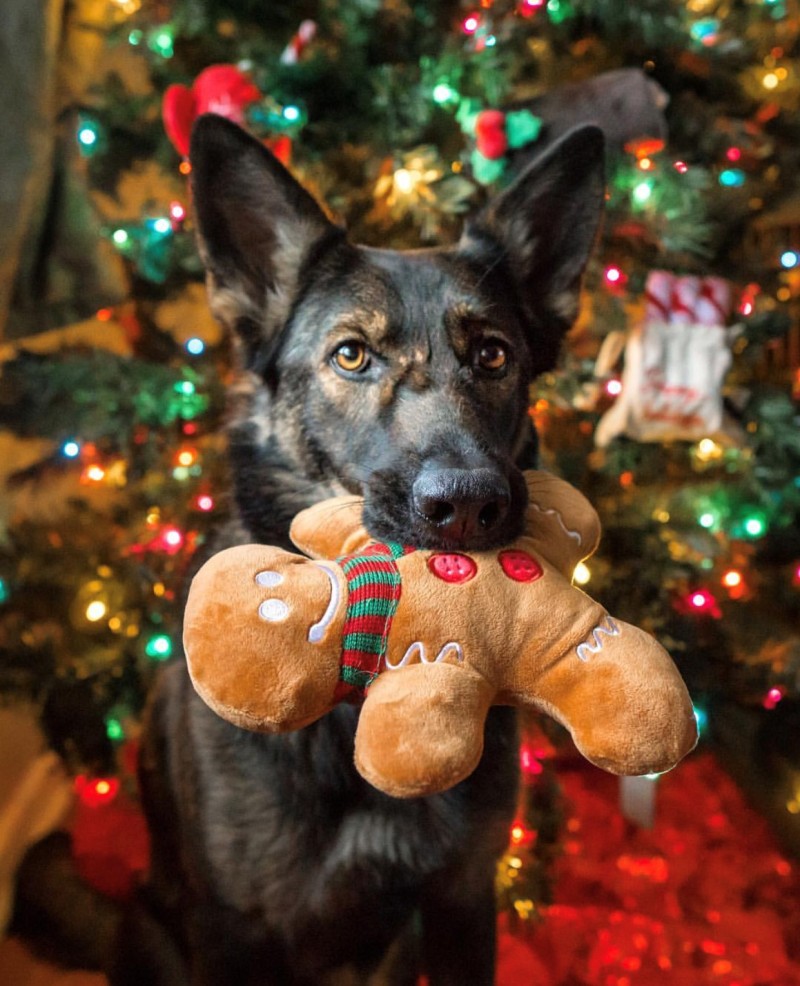
Understanding the Importance of Safe Toys for Puppies
When it comes to raising a puppy, providing them with the right toys is just as crucial as giving them proper nutrition and exercise. Safe puppy toys not only keep your little furball entertained, but they also play a vital role in their development. Here’s why investing in high-quality, safe toys is so important for your new furry friend:
-
Mental Stimulation: Puppies have curious minds and a natural tendency to explore. Safe toys that engage their senses, like puzzle toys or those with different textures, can help stimulate their cognitive growth. This mental exercise keeps their brain active and can prevent boredom, which often leads to destructive behaviors.
-
Physical Exercise: Puppies are full of energy, and it’s essential to provide them with opportunities to burn it off. Safe chew toys and tug-of-war toys encourage physical activity, helping to strengthen their muscles and bones. Regular play sessions can also aid in maintaining a healthy weight and reducing the risk of obesity.
-
Dental Health: Chewing is a natural behavior for puppies, and it’s not just for fun. It helps clean their teeth, reduce tartar buildup, and promote overall dental health. Choosing safe, durable toys that are designed for teething can protect your puppy’s oral hygiene while providing them with the relief they need.
-
Teething Relief: Many puppies go through a teething phase around 3 to 4 months of age, which can be uncomfortable for them. Safe teething toys that are soft yet resilient can help soothe their gums, providing relief without the risk of injury to their teeth or mouth.
-
Socialization: Interaction with toys can mimic socialization with other animals or humans. Toys that mimic playtime with other dogs or humans can help your puppy learn appropriate behaviors and social cues, which is crucial for their development into a well-behaved adult dog.
-
Safety First: Not all toys are created equal, and some can pose serious risks to your puppy. Safe puppy toys are designed with non-toxic materials and do not contain small parts that can be easily swallowed or cause choking. They are also durable enough to withstand rough play without breaking into harmful pieces.
-
Avoiding Aggressive Behaviors: Puppies that do not have proper outlets for their energy and natural instincts can develop aggressive behaviors. By providing them with toys that allow them to express their predatory nature safely, such as tug toys or plush animals with squeakers, you can help channel their energy positively.
-
Longevity: High-quality safe toys are often more durable than their cheaper counterparts, meaning they can last for years. This not only saves you money in the long run but also ensures that your puppy has access to safe playthings throughout their various stages of growth.
-
Educational Value: Many toys are designed with educational elements, such as those that help teach your puppy to recognize their name, colors, or shapes. These toys can make playtime fun and also aid in their learning and training process.
-
Bonding Time: Playing with your puppy with safe toys is a great way to bond. It shows your puppy that you are interested in their world and can help create lasting memories. The time spent together can strengthen the bond between you and your furry companion.
In conclusion, safe puppy toys are an investment in your puppy’s health, happiness, and development. By choosing the right toys, you are setting your puppy up for a lifetime of positive interactions with their surroundings, reducing the likelihood of behavioral issues and promoting a strong, well-rounded pet.
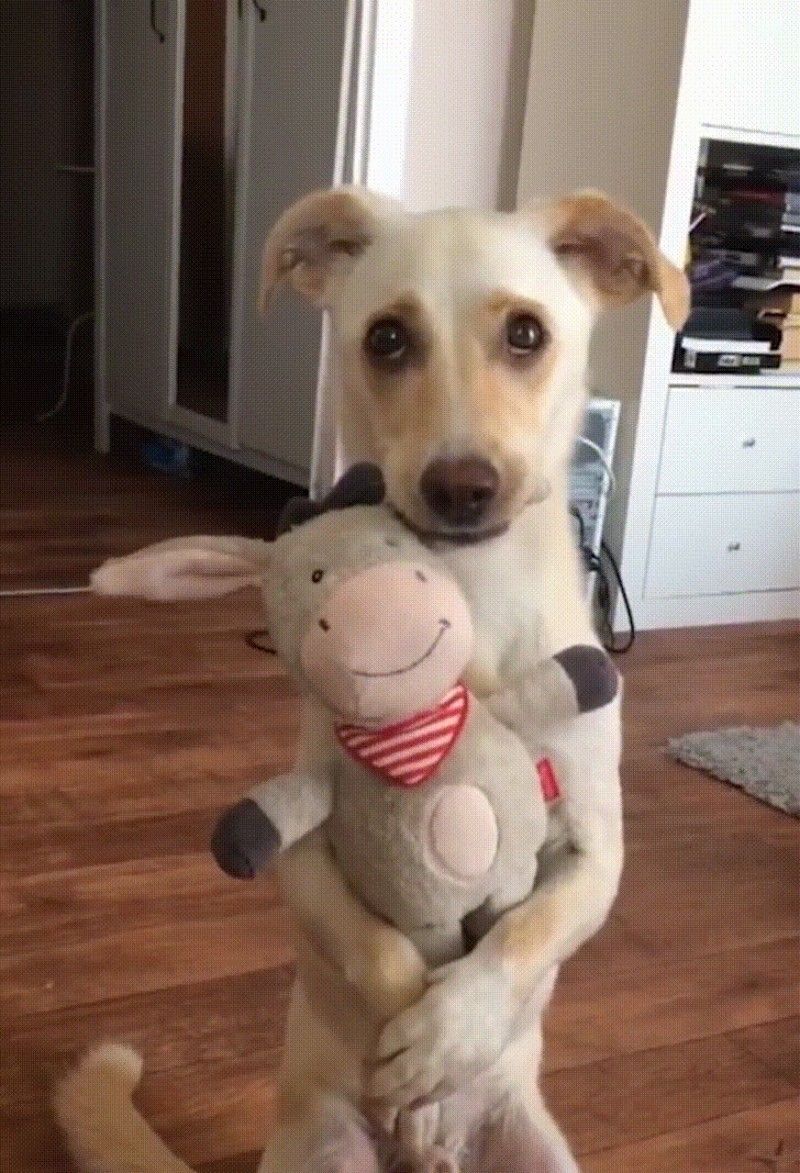
Key Features to Look for in Safe Puppy Toys
When selecting toys for your puppy, safety should be your top priority. Here are some key features to look for in safe puppy toys:
Material MattersThe choice of materials is crucial. Opt for toys made from non-toxic, durable materials like natural rubber, nylon, or high-quality fabrics. These materials are less likely to cause harm if they are chewed or ingested by your puppy.
Stitching and ConstructionInspect the stitching and construction of the toy. Look for toys with sturdy seams and reinforced stitching. Toys with loose threads or seams that are easily pulled apart can pose a choking hazard or lead to small parts becoming detached.
Size and ShapeConsider the size and shape of the toy. Puppies, especially teething ones, can be quite destructive. Ensure that the toy is not too small to prevent swallowing or choking. The shape should also be appropriate for your puppy’s play style; some may prefer soft plush toys, while others might enjoy interactive toys with moving parts.
Chew-ResistantPuppies have a natural instinct to chew, which is essential for teething and dental health. Look for toys that are specifically designed to be chew-resistant. These toys are often made with a tough outer layer that can withstand rigorous play without breaking apart.
Interactive ElementsInteractive toys can provide mental stimulation and help prevent boredom. Look for toys with features like squeakers, crinkly sounds, or moving parts that encourage your puppy to engage with the toy. These can be great for both physical and mental exercise.
No Small PartsAvoid toys with small parts that can easily be pulled off and swallowed. This includes buttons, eyes, or any other small accessories that might detach. If a toy has any removable parts, ensure they are securely attached and that they are too large to pose a choking risk.
Ergonomic DesignA well-designed toy should be comfortable for your puppy to hold and play with. Look for toys with ergonomic shapes that fit comfortably in your puppy’s mouth and encourage proper gripping.
Water-ResistantMany puppies enjoy playing with water. Consider a water-resistant toy that can be submerged and then washed. This not only extends the life of the toy but also keeps it clean and hygienic.
Age-AppropriateChoose toys that are age-appropriate for your puppy. Young puppies may need softer, more gentle toys, while older puppies might enjoy harder, more durable playthings. Always read the label for age recommendations.
DurabilityDurability is key, especially if you have a particularly energetic or aggressive chewer. Look for toys that are designed to withstand heavy chewing and play. A well-made toy can last for years, providing endless entertainment for your furry friend.
Ease of CleaningSome toys can be a bit of a hassle to clean. Look for toys that are easy to wash, whether they are machine washable or can be simply wiped down with a damp cloth. This will help maintain the toy’s cleanliness and longevity.
CertificationsLastly, consider toys that have safety certifications. Look for labels indicating that the toy meets safety standards set by reputable organizations. This can give you peace of mind that the toy has been tested for safety.
By keeping these key features in mind, you can ensure that the toys you choose for your puppy are not only fun and engaging but also safe and suitable for their developmental needs. Remember, a happy and healthy puppy starts with the right toys!
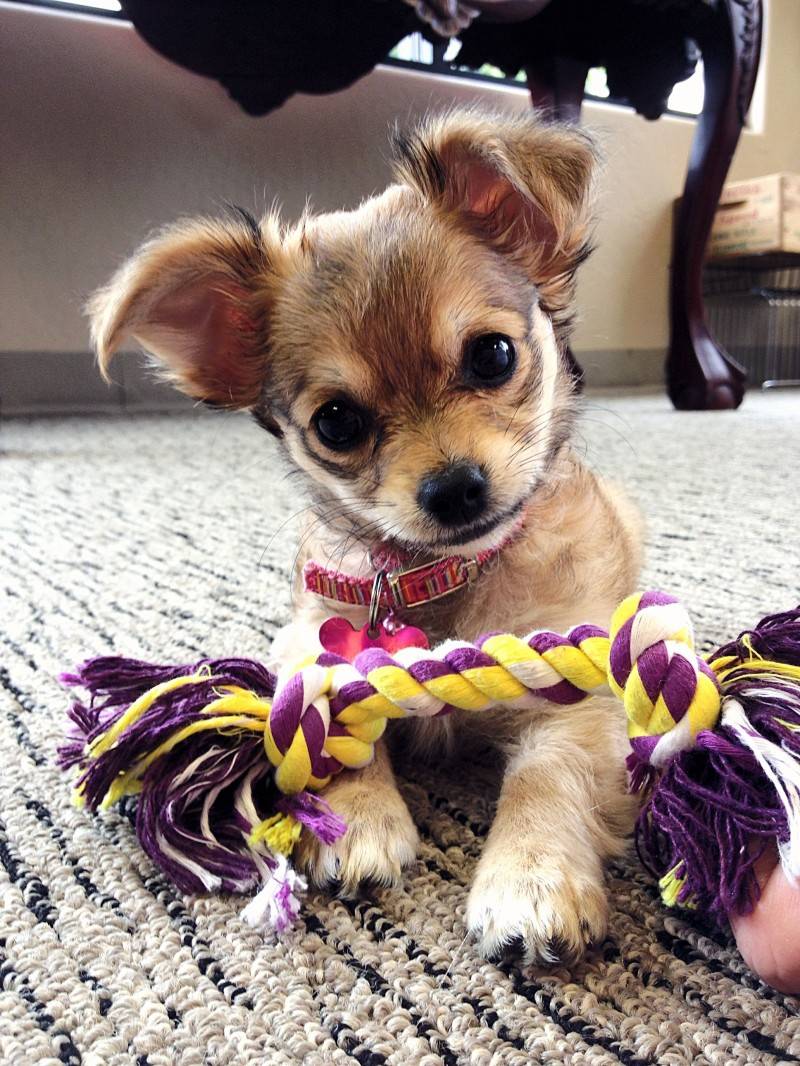
Top Picks: Our Favorite Safe Puppy Toys
In the world of puppy play, not all toys are created equal. When it comes to selecting the perfect toy for your furry friend, safety should always be the top priority. Here are some of our favorite safe puppy toys that are not only fun but also designed to withstand the playful antics of young pups.
1. Interactive Treat-Dispensing ToysThese toys are a hit with puppies who love to solve puzzles and earn their snacks. Look for models with sturdy construction and easy-to-fill compartments. The Crinkle sound and textures can stimulate your puppy’s senses, making playtime both mentally and physically rewarding.
2. Plush Toys with Hidden SnacksPlush toys can be a soothing comfort for puppies, but when they come with hidden snacks, they become a delightful challenge. Choose plush toys with durable stitching and no small parts that could pose a choking hazard. The unpredictability of finding treats can keep your puppy engaged for hours.
3. Tug Toys Made from Natural MaterialsNatural rubber or rope tug toys are great for puppies who need to chew and play. These toys are often biodegradable and can withstand the rigors of a teething puppy’s jaws. The natural textures can help soothe sore gums and provide a satisfying chew.
4. Dental Chews and Teething RingsTeething is a crucial stage in a puppy’s development, and dental chews can help keep their teeth clean and healthy. Look for chews that are large enough to prevent choking but small enough to massage the gums. Some dental chews are even infused with ingredients like green tea to promote fresh breath.
5. Soft Ball Toys with Noisy ComponentsBalls are a classic choice for puppies, and adding a crinkle sound or a bell can make them even more appealing. These toys encourage fetch games, which are excellent for exercise. Ensure the ball is made from non-toxic materials and is durable enough to be batted around without breaking.
6. Puzzle Toys for Mental StimulationPuzzle toys are fantastic for stimulating your puppy’s mind. They come in various shapes and sizes, each with a different challenge. Puppies learn through problem-solving, and these toys can help prevent boredom and destructive behavior. Look for toys that can be filled with treats to keep your puppy engaged.
7. Durable Plush AnimalsFor a puppy that loves to snuggle, a plush animal can be a perfect companion. However, not all plush toys are suitable for puppies. Choose plush toys with reinforced seams and no small parts that can be easily torn off. Some plush toys come with squeakers that can add an extra layer of fun.
8. Rope and Fleece Combination ToysCombination toys that combine rope and fleece are great for puppies who enjoy both textures and the feeling of chewing. These toys can be thrown, pulled, and chewed on, offering a multi-sensory play experience. Always inspect the toy for loose threads or fraying edges that could become a hazard.
9. Water Toys for Pups Who Love the PoolIf your puppy enjoys water, consider a durable water toy that can float and be thrown around. These toys can be made from non-toxic materials and can help your pup stay cool on hot days. They also encourage swimming and exercise, which are vital for a puppy’s health.
10. Noise-Making Toys for Extra FunFor puppies who need a little extra motivation to play, noise-making toys can be a great option. Toys with jingle bells or squeakers can capture a puppy’s attention and encourage them to engage in play. Just be sure the noise isn’t too loud to avoid startling your furry friend.
When selecting a safe puppy toy, always consider the size of your puppy, their chewing habits, and any specific needs they might have. It’s also important to supervise playtime, especially when introducing new toys, to ensure they are used safely. With the right toys, your puppy can enjoy hours of safe, healthy play.
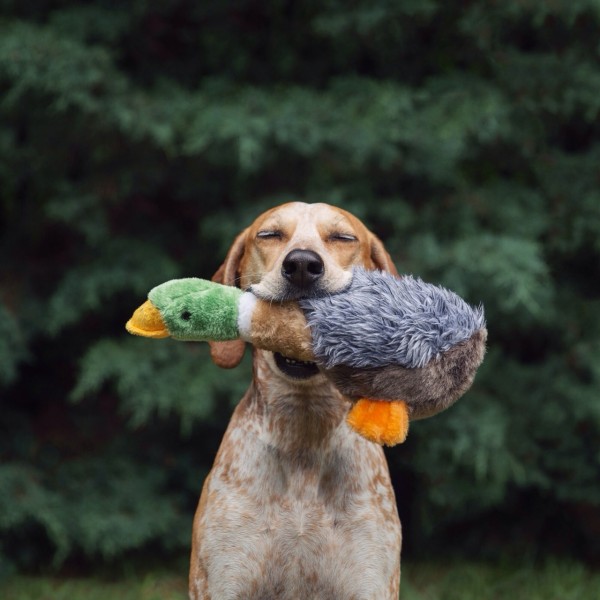
How to Introduce New Toys to Your Puppy
Introducing a new toy to your puppy can be an exciting time, but it’s important to do it correctly to ensure your furry friend has a positive experience. Here are some tips on how to introduce new toys to your puppy, fostering a sense of play and safety.
Puppies are naturally curious, and their senses are heightened, especially when it comes to exploring new objects. It’s crucial to take this curiosity into account when introducing new toys. Allow your puppy to sniff and investigate the toy at their own pace. This not only gives them a chance to become familiar with the toy’s texture and scent but also helps to build trust.
When selecting a new toy, consider the size and shape. Puppies have tiny teeth and fragile jaws, so opt for toys that are appropriately sized and shaped to avoid any choking hazards. Look for toys that are durable yet gentle on your puppy’s gums. A soft, plush toy with a squeaker can be a great start, as it’s both engaging and safe for teething pups.
Introducing the toy in a calm environment is key. Avoid introducing a new toy in a noisy or chaotic setting, as this can overwhelm your puppy. Instead, choose a quiet room where your puppy can focus on the new object without distractions. Place the toy in front of your puppy and let them approach it on their terms.
Engage with your puppy as they interact with the toy. Use a gentle tone of voice and encourage them with praise. This positive reinforcement helps to create a positive association with the toy. If your puppy seems hesitant, gently show them how to play with it, perhaps by wiggling the toy to mimic the sound of a realistic object or pet.
It’s natural for puppies to chew on their toys, but not all chewing is equal. Monitor your puppy’s behavior to ensure they are not biting or chewing excessively hard, which could lead to damage to the toy or even injury to their mouth. If you notice this behavior, gently redirect them to other appropriate toys or activities.
Some puppies may be more interested in the packaging than the toy itself. If your puppy seems more interested in the box or plastic wrapping, try hiding treats or small pieces of kibble inside the toy. This can encourage them to focus on the toy itself and not just the packaging.
Once your puppy has become accustomed to the toy, introduce it during playtime. This can be a great opportunity to teach your puppy basic commands or to incorporate the toy into training exercises. For example, you can ask your puppy to “fetch” the toy or to “sit” and “stay” while holding it.
Remember that each puppy is unique, and what works for one may not work for another. Be patient and observant, and you’ll learn which toys your puppy prefers and how they like to play with them. Some may enjoy tug-of-war games, while others might prefer to play alone with a puzzle toy.
Over time, gradually introduce more toys into your puppy’s play rotation. This keeps playtime interesting and can help prevent boredom. However, always supervise playtime, especially with new toys, to ensure they are safe and not being chewed on to the point of breaking.
In conclusion, introducing new toys to your puppy is a process that requires patience and observation. By choosing the right toys, creating a calm introduction, and using positive reinforcement, you can help your puppy develop a love for safe and engaging play. Always prioritize your puppy’s safety and well-being, and you’ll be well on your way to providing them with a joyful and enriching play experience.
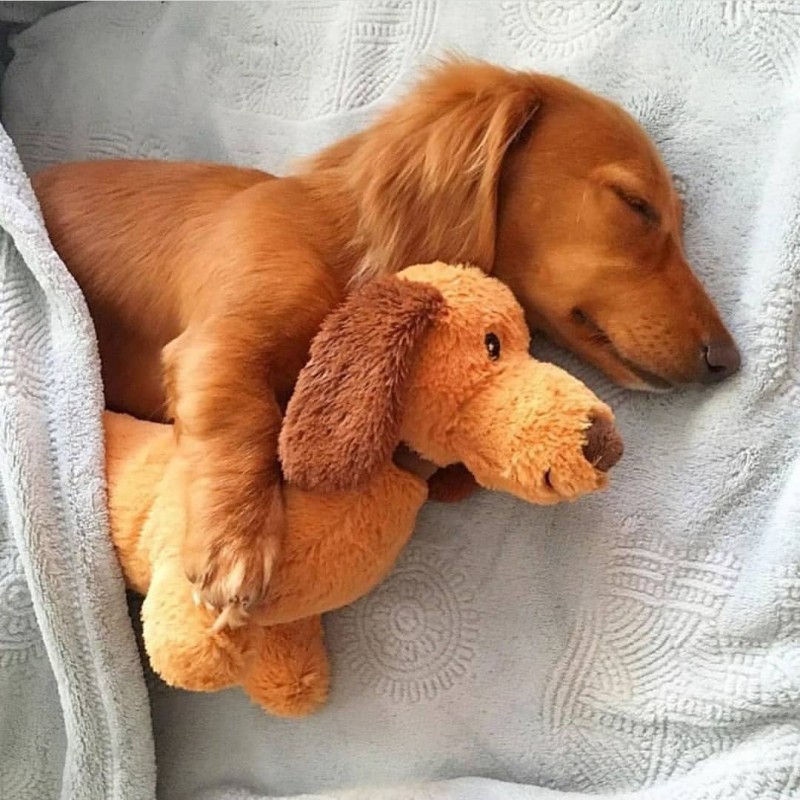
The Benefits of Interactive Toys for Puppies
Interactive toys are not just fun for puppies; they play a crucial role in their development and well-being. Here’s a closer look at the myriad benefits these toys offer to our furry friends:
Endless Mental StimulationInteractive toys are designed to engage a puppy’s mind, providing constant mental stimulation. By encouraging problem-solving and curiosity, these toys help to keep your puppy’s brain active and healthy. Whether it’s a puzzle toy that requires them to figure out how to get treats out or a toy that mimics the sounds of a bird, these items can keep your pup’s mind sharp and prevent boredom.
Physical ExerciseWhile many people think of interactive toys as just a mental challenge, they also offer a great way to get your puppy moving. Toys that encourage fetching, chasing, or climbing can help to ensure your puppy gets the exercise they need to maintain a healthy weight and muscle tone. Regular physical activity is essential for a puppy’s growth and can prevent obesity and related health issues.
SocializationInteractive toys can also be used as a tool for socialization. Introducing new toys to your puppy can help them learn to share and play with others. This is especially important if you have multiple pets or plan to take your puppy to dog parks. Toys that can be played with together can foster a sense of camaraderie and teach your puppy how to interact politely with other dogs.
Emotional Well-beingPuppies, like humans, can experience anxiety and stress. Interactive toys can be a great way to provide comfort and reduce separation anxiety. A puppy who is occupied with a toy is less likely to whine or chew on inappropriate items when you’re not around. These toys can also help to soothe puppies during thunderstorms or other stressful situations.
Teaching BoundariesInteractive toys can be used to teach your puppy about boundaries and acceptable behavior. For instance, a toy that squeaks might be a cue to your puppy that certain noises are okay, while a toy with a strong odor can help them learn about appropriate smells. By using toys in training sessions, you can reinforce good behavior and discourage bad habits.
Encouraging Natural InstinctsPuppies have natural instincts that include hunting, chasing, and playing. Interactive toys that mimic these instincts can help to satisfy these drives in a controlled and safe manner. This can prevent destructive behavior, such as chewing on furniture or shoes, as your puppy finds healthier outlets for their energy.
Cognitive DevelopmentInteractive toys can aid in the cognitive development of puppies. As they play, they learn about the world around them, how to use their senses, and how to interact with objects. This can lead to a more intelligent and adaptable dog as they grow.
Dental HealthMany interactive toys are designed to help with dental hygiene. Chewing on these toys can help to clean your puppy’s teeth, reduce tartar buildup, and massage their gums. This not only keeps their teeth healthy but also reduces the risk of dental disease, which can be costly and painful to treat.
Longevity of PlayInteractive toys often last longer than traditional plush or rope toys. They are designed to withstand rigorous play, which means they can provide entertainment for months or even years. This can be a cost-effective way to keep your puppy engaged without constantly needing to buy new toys.
CustomizationInteractive toys can be customized to your puppy’s preferences and needs. Some are great for indoor play, while others are designed for outdoor adventures. There are toys for dogs of all sizes, breeds, and energy levels. This customization ensures that your puppy gets the most out of their playtime.
In conclusion, interactive toys offer a multitude of benefits for puppies. From mental stimulation and physical exercise to socialization and emotional well-being, these toys can be a cornerstone of a healthy and happy puppyhood. By incorporating interactive play into your puppy’s routine, you’re not just providing entertainment; you’re investing in their overall development and happiness.

Caring for Your Puppy’s Toys: Tips for Longevity
Choosing the right toys for your puppy is crucial, but maintaining them is equally important. Here are some tips to ensure your puppy’s toys last longer and stay in good condition:
Regular InspectionsKeep a close eye on your puppy’s toys. Regularly check for any signs of wear, such as frayed edges, loose parts, or cracks. A small tear can quickly become a bigger problem, so it’s essential to inspect toys daily, especially after playtime.
Cleaning and SanitizingPuppies are notorious for putting everything in their mouths, which means their toys can get pretty dirty. Regular cleaning is not only hygienic but also helps to extend the life of the toys. Hand-wash plush toys with mild soap and water, and for rubber or plastic toys, a quick rinse under the tap is often sufficient. Be sure to dry them thoroughly before storing them away.
Avoiding Harsh ChemicalsWhen cleaning toys, steer clear of harsh chemicals or abrasive cleaners. These can damage the materials and potentially be harmful to your puppy if ingested. Opt for gentle, pet-safe detergents and ensure all soap residue is rinsed out.
Proper StorageWhere you store your puppy’s toys can impact their longevity. Keep toys in a designated area, such as a toy box or a basket. This not only helps keep your living space tidy but also prevents toys from getting lost or damaged. Avoid storing toys in direct sunlight, as this can fade colors and degrade materials over time.
Replacing Worn-Out ToysEven with the best care, toys will eventually need to be replaced. When a toy becomes too worn or damaged, it’s no longer safe for your puppy to play with. Look for toys that have lost their shape, have sharp edges, or have parts that are coming loose. It’s better to invest in new toys than to risk your puppy’s safety.
Durable MaterialsWhen purchasing new toys, consider those made from durable materials. High-quality plush toys often have reinforced stitching and sturdy fillings. For chew toys, natural rubber or durable fabrics are great choices. These materials are not only long-lasting but also tend to be more resistant to the wear and tear of teething puppies.
Encouraging Responsible ChewingTeach your puppy to chew responsibly. Provide a variety of toys that cater to different types of chewing, from soft plush to hard rubber. This way, your puppy can choose the right toy for their current teething stage. Encourage your puppy to chew on these toys instead of furniture or other household items.
Avoiding Small PartsSmall parts can be a choking hazard for puppies. When selecting toys, opt for those without small pieces that can easily be pulled off. For example, avoid plush toys with removable eyes or noses, as these can become loose and pose a risk.
Handling and MaintenanceHandle your puppy’s toys with care. Avoid pulling on strings or parts that are not designed to be tugged. This can lead to damage over time. When your puppy is done playing, gently shake out plush toys to remove any loose fur or debris.
Educating Your PuppyTeach your puppy to play gently with their toys. Some puppies may be rougher than others, and it’s important to correct this behavior early on. Praise your puppy when they play nicely and redirect them if they start to chew on something they shouldn’t.
Regular RotationKeep your puppy’s toy collection fresh by rotating toys. Not all toys are used equally, so some may become less appealing over time. Rotate toys so that your puppy gets to enjoy a variety of playthings, which can also help prevent boredom.
Professional Cleaning ServicesIf your puppy’s toys are particularly dirty or if you’re unable to clean them thoroughly at home, consider using a professional pet cleaning service. These services can often sanitize toys more effectively than at-home methods.
By following these tips, you can ensure that your puppy’s toys remain safe, enjoyable, and long-lasting. Remember, the right care for your puppy’s toys is an investment in their happiness and safety.
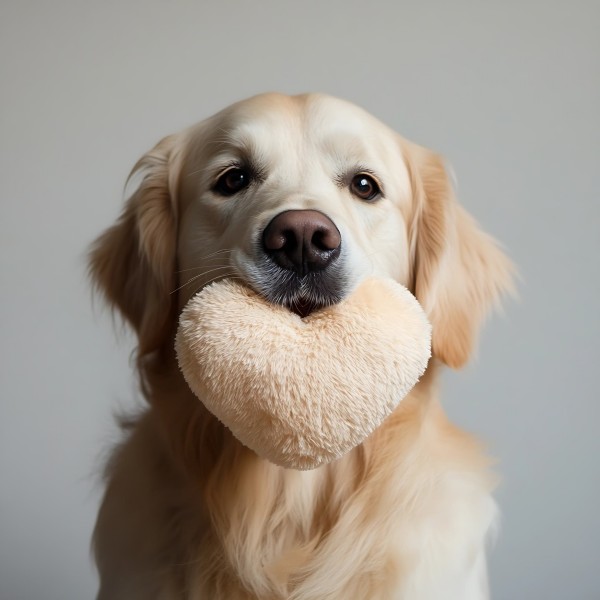
Conclusion: Ensuring a Happy and Safe Playtime for Your Furry Friend
In wrapping up our exploration of puppy playtime, it’s crucial to remember that the joy and safety of your furry friend are paramount. Ensuring a happy and safe playtime not only brings smiles to your puppy’s face but also strengthens the bond between you. Here are some final thoughts on how to maintain a playful and secure environment for your canine companion.
The Joy of Play for PuppiesPuppies are naturally curious and playful creatures, and their toys are more than just items to chew on; they are tools for development. Play is essential for a puppy’s mental and physical growth, helping them learn about their world and themselves. By providing the right toys, you’re not just entertaining your puppy; you’re investing in their overall well-being.
Safety is Non-NegotiableWhen it comes to puppy toys, safety should always be the top priority. Toys that are too small, have sharp edges, or are made from toxic materials can pose serious risks. It’s important to inspect toys regularly for any signs of wear or damage that could become hazards.
Regular Inspections and CleaningTo keep your puppy’s toys in tip-top shape, regular inspections are a must. Look for any loose parts, frayed strings, or worn-out edges that could cause injury. Additionally, cleaning toys regularly can prevent the buildup of bacteria and dirt, which can lead to health issues for your puppy.
The Right Toys for Different StagesPuppies go through different stages of development, and their toy needs can vary accordingly. For teething puppies, soft, chewable toys are ideal. As they grow, they might enjoy toys that encourage problem-solving or physical activity. Understanding your puppy’s age and play style can help you choose the best toys for each phase.
Encouraging Socialization Through ToysInteractive toys can be a fantastic way to socialize your puppy. By playing with these toys, they can learn to interact with other dogs and humans in a controlled and positive environment. This can help build their confidence and prepare them for various social situations.
Interactive Toys for Mental StimulationInteractive toys are not just for physical play; they are also excellent for mental stimulation. Puzzle toys, for example, can challenge your puppy’s problem-solving skills, helping to keep their mind sharp and engaged. This mental exercise is just as important as physical activity for a puppy’s cognitive development.
The Importance of SupervisionWhile toys are a great way to keep your puppy occupied, it’s essential to supervise playtime, especially with new or particularly sturdy toys. This ensures that your puppy doesn’t swallow small pieces or chew through something that could cause harm.
Creating a Play SpaceDesignating a specific play area can help keep your home organized and make it easier to manage your puppy’s toys. A play space can also be a great place for your puppy to unwind and enjoy their toys without disturbing the rest of the household.
The Role of RoutineEstablishing a routine for playtime can be beneficial for both you and your puppy. Consistency helps your puppy understand what to expect, making them more likely to engage with their toys and enjoy the playtime you’ve set aside for them.
The Bond Between You and Your PuppyIn the end, the most important aspect of playtime is the bond it strengthens between you and your puppy. Sharing these moments of joy and laughter can create lasting memories and a deeper connection with your furry friend.
In ConclusionEnsuring a happy and safe playtime for your puppy is about more than just selecting the right toys; it’s about creating an environment that supports their growth, health, and happiness. By being mindful of their needs, supervising playtime, and maintaining a clean and safe play space, you can help your puppy thrive. Remember, the joy of play is a gift that keeps on giving, and the bond you share with your puppy is priceless.
